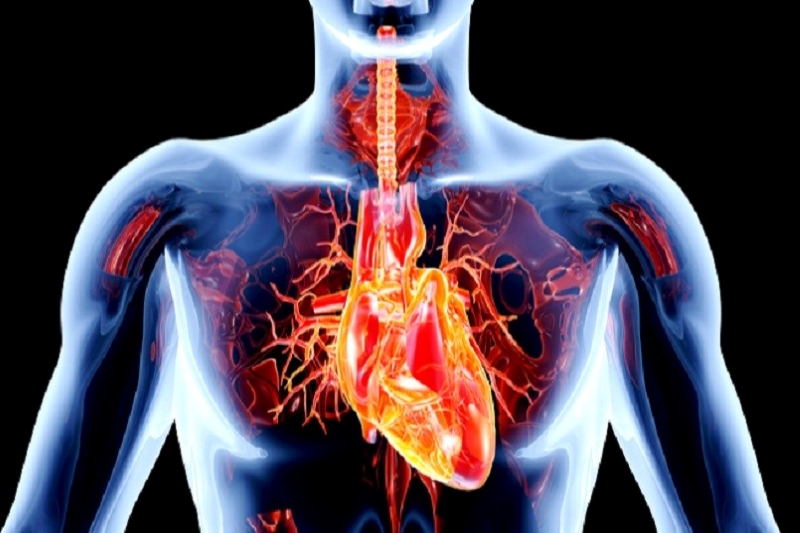
Congenital heart disease: coarctation of the aorta
Coarctation of the aorta is a congenital heart disease characterized by narrowing or constriction of the aorta
The aorta is the largest and most important artery in the human body, it originates in the left ventricle of the heart and is made up of multiple ramifications; through these ramifications every single part of the body will be supplied with oxygenated blood.
It can be divided into two large sections; thoracic aorta, which in turn can be divided into the ascending aorta, aortic arch and descending aorta, and the abdominal aorta.
Coarctation of the aorta can be the result of genetic syndromes but also as an isolated form
Men are most affected.
The aortic coarctation, in the heart of those affected, will see a narrowing, sometimes even very marked, immediately after the point where the arteries that carry blood to the head and upper limbs branch off.
It is not yet clear how aortic coarctation develops and manifests itself, it is assumed that it may be due to an anomalous insertion between the ductus arteriosus and the descending thoracic aorta.
Prenatal diagnosis of aortic coarctation increases survival and reduces mortality.
But it must be said that the diagnosis of aortic coarctation during fetal life is impossible to exclude a priori as in the normal fetal heart the right sections can be wider than the left ones.
Coarctation of the aorta can be divided into three categories
– pre ductal coarctation, will occur when the narrowing is proximal to the ductus arteriosus of Botallo, the flow in the aorta will depend on the patent duct. It is the most severe form. This form during fetal life leads to the non-development of the aorta artery which thus becomes hypoplastic. This occurs in about 5% of children with Turner syndrome;
– ductal coarctation, which occurs when it is located at the level of the arterial duct and occurs at birth when this duct closes;
– post-ductal coarctation will occur when the narrowing is distal to the ductus arteriosus of Botallo, it is the most common form of adolescence or adulthood.
There are forms of aortic coarctation that can manifest in the neonatal period and forms that will manifest later in time.
The precocity of symptoms is linked to the degree of obstruction and cardiac circulation will depend on the maintenance of the patent Botallo duct.
It will manifest itself in the neonatal period if it presents itself in its most severe forms, although there may be no symptoms at birth; symptoms that will begin to appear from the second week of life.
Among the most common symptoms in neonatal forms we will have: irritability, inappetence, poor growth, increased respiratory rate, labored breathing and pale or greyish skin.
In the later forms the symptoms will be linked to circulatory problems and cardiac hypertrophy; there will also be headache, increased blood pressure, chest pain, exhaustion, fatigue, dizziness, fainting and nose bleeds.
You may have pain and chills in your lower limbs.
In both cases there will be an absence of femoral pulse, i.e. pulsation at the inguinal level.
Diagnosis will be based on: absence or scarcity of pulse in the legs, increased pressure in the upper limbs, so you will have higher blood pressure in the upper part of the body than in the lower part, heart murmur.
You will have to perform: electrocardiogram, chest x-ray, magnetic resonance, chest tac and cardiac catheterization
The treatment of aortic coarctation in the newborn is generally surgical, the narrowed part will be removed through an incision made in the left hemithorax.
The risks associated with surgery are low, however it could happen that there are recurrences of the obstruction which will be treated with a balloon catheter inserted through the leg.
Following the treatment of aortic coarctation, episodes of arterial hypertension could occur in patients, which could conceal recurrences of obstructions
In children, after the treatment of coarctation, normal daily activities will resume after a few weeks.
It will also be important to perform an electrocardiogram, stress test and blood pressure monitoring approximately every 24 hours.
After 6 months, an assessment can be carried out for the suitability of sports suitability for those who practice it.
Read Also
Emergency Live Even More…Live: Download The New Free App Of Your Newspaper For IOS And Android
Myocardiopathy: What Is It And How To Treat It?
Venous Thrombosis: From Symptoms To New Drugs
Cyanogenic Congenital Heart Disease: Transposition Of The Great Arteries
Heart Murmur: What Is It And What Are The Symptoms?
Heart Rate: What Is Bradycardia?
Branch Block: The Causes And Consequences To Take Into Account
Cardiopulmonary Resuscitation Manoeuvres: Management Of The LUCAS Chest Compressor
Supraventricular Tachycardia: Definition, Diagnosis, Treatment, And Prognosis
Identifying Tachycardias: What It Is, What It Causes And How To Intervene On A Tachycardia
Myocardial Infarction: Causes, Symptoms, Diagnosis And Treatment
Aortic Insufficiency: Causes, Symptoms, Diagnosis And Treatment Of Aortic Regurgitation
Congenital Heart Disease: What Is Aortic Bicuspidia?
Atrial Fibrillation: Definition, Causes, Symptoms, Diagnosis And Treatment
Ventricular Fibrillation Is One Of The Most Serious Cardiac Arrhythmias: Let’s Find Out About It
Atrial Flutter: Definition, Causes, Symptoms, Diagnosis And Treatment
What Is Echocolordoppler Of The Supra-Aortic Trunks (Carotids)?
What Is The Loop Recorder? Discovering Home Telemetry
Cardiac Holter, The Characteristics Of The 24-Hour Electrocardiogram
Peripheral Arteriopathy: Symptoms And Diagnosis
Endocavitary Electrophysiological Study: What Does This Examination Consist Of?
Cardiac Catheterisation, What Is This Examination?
Echo Doppler: What It Is And What It Is For
Transesophageal Echocardiogram: What Does It Consist Of?
Paediatric Echocardiogram: Definition And Use
Heart Diseases And Alarm Bells: Angina Pectoris
Fakes That Are Close To Our Hearts: Heart Disease And False Myths
Sleep Apnoea And Cardiovascular Disease: Correlation Between Sleep And Heart


